Introduction to the Marche Region
Nestled along Italy's eastern coast, the Marche region is a land of remarkable diversity, seamlessly blending historical heritage, natural landscapes, and vibrant culture. Known as the “hidden treasure of Italy,” the Marche offers a rare opportunity to explore an authentic side of Italian life, away from the bustling crowds. From picturesque coastal towns to medieval hilltop villages, the Marche captures the essence of Italy's rich cultural history and natural beauty, making it an ideal choice for conferences that emphasize innovation and heritage.
The Marche is also recognized for its high-quality artisanal crafts, renowned wines, and outstanding cuisine, giving visitors a chance to truly “live like a local.”
This guide offers a curated tour map of the Marche, featuring must-see sights in Ancona and beyond, from ancient monuments and lively piazzas to stunning seaside retreats along the Conero Riviera.
Conference participants and attendees will have the opportunity to “mix business and pleasure” by enjoying the unique charm and attractions that Ancona and the Marche region have to offer. From stunning coastline views along the Adriatic Sea to historic landmarks and local cuisine, Ancona provides an ideal setting for a memorable experience. Additional information and recommendations for local sights will be provided soon! For more information https://anconatourism.it/.
Ancona
Ancona is located on Italy’s eastern coast along the Adriatic Sea and serves as the capital of the Marche region. This ancient port city is known for its captivating blend of history and natural beauty, offering visitors sights like the 11th-century Cathedral of San Ciriaco, the Lazzaretto fortress, and the charming Parco del Cardeto. Beyond Ancona’s borders, the Marche region is home to rolling hills, vineyards, and picturesque towns that highlight the area’s rich cultural heritage.
Piazza del Plebiscito
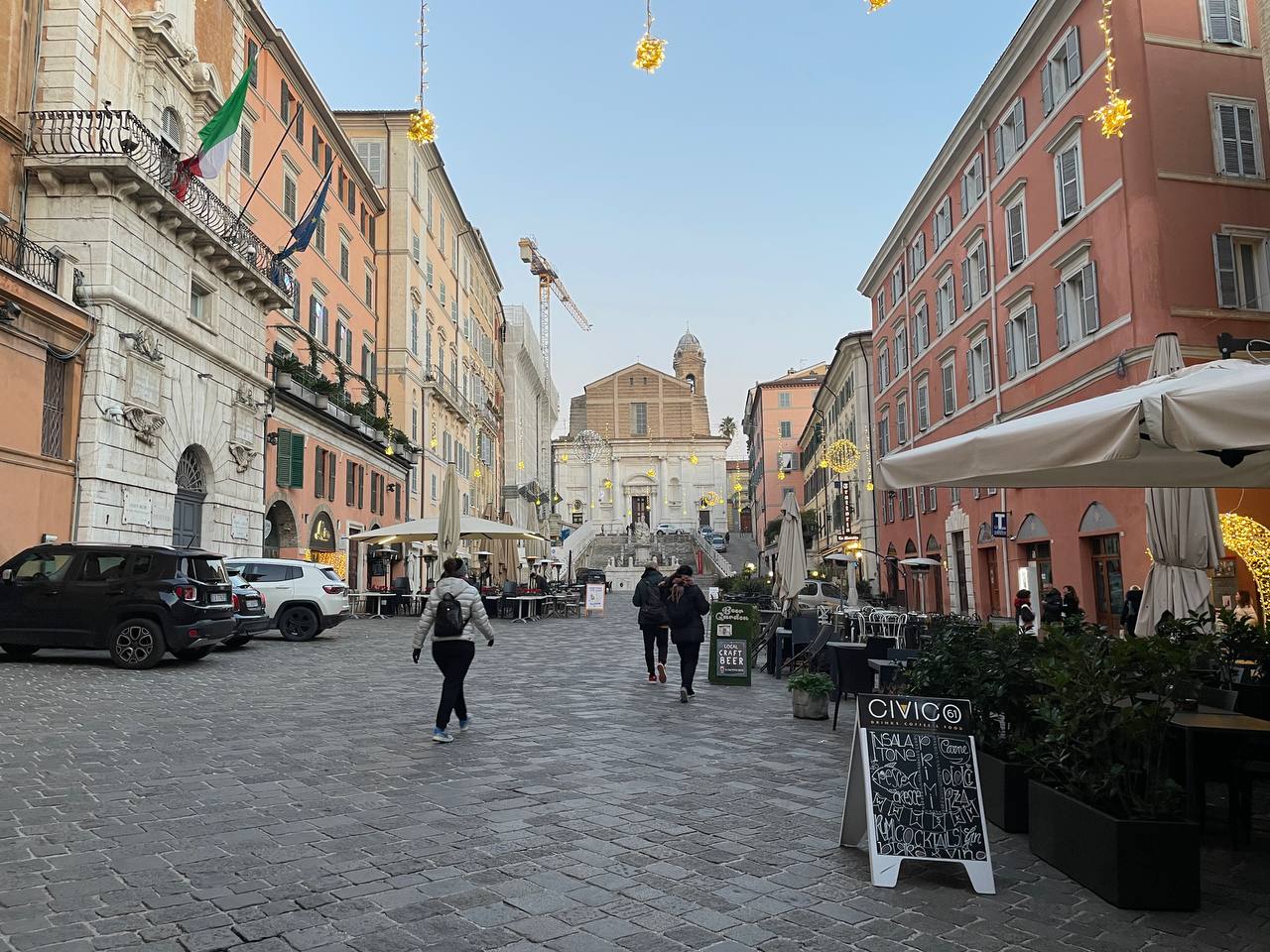
The square of Piazza del Plebiscito, meaning “Referendum Square”, it is also called Piazza del Papa (Pope Square) because of the statue of Pope Clement XII.
It is the oldest of squares: built in the late XV century, and before the expansion of the town after the unification of Italy (1860) it was the city’s central square, the “big square” where the borders of three neighborhoods met: Porto, Capodimonte and St. Peter.
In 1860 it received its current name in memory of the plebiscite, held on 4 and 5 November 1860, by which the Marche joined the Kingdom of Italy. It has a rectangular and very long shape, and it is based on different levels.
The characteristic feature of the square is the staircase, on top of which there is the church of St. Domenico; the staircase also surrounds the statue of Clement XII, a benefactor for the city, who granted Ancona the status of free port.
The most representative building of the square is the Government Palace (now the seat of the Prefecture) built in the second half of the 14th century as the new seat of city government.
At the center of the square is a circular Fountain (Fontana Emiciclica), built in 1817 by architect Pietro Zara, who was also in charge for the arrangement of the terrace behind, which gives access to the premises of the Hospital of St. Thomas Becket (today seat of the City Musesum).
On the right side of the square is the fountain of the Beheaded, also called Fontanone, dating from the fifteenth century and built by the township to provide drinking water to the houses overlooking the square (at that time still unfinished).
The Renaissance frieze is decorated with ten heads, two cherubs and eight portraits. According to popular tradition, these are the portraits of noblemen of Ancona who were beheaded in this very square by Cardinal Accolti after the city had been captured by deceit in 1532.
Although other squares have been built in later years (until 1822 this was the only square), today this remains the core of the old city and focal point of the nightlife of Ancona.
ADDRESS: Piazza del Plebiscito, 60121 Ancona
Porta Pia
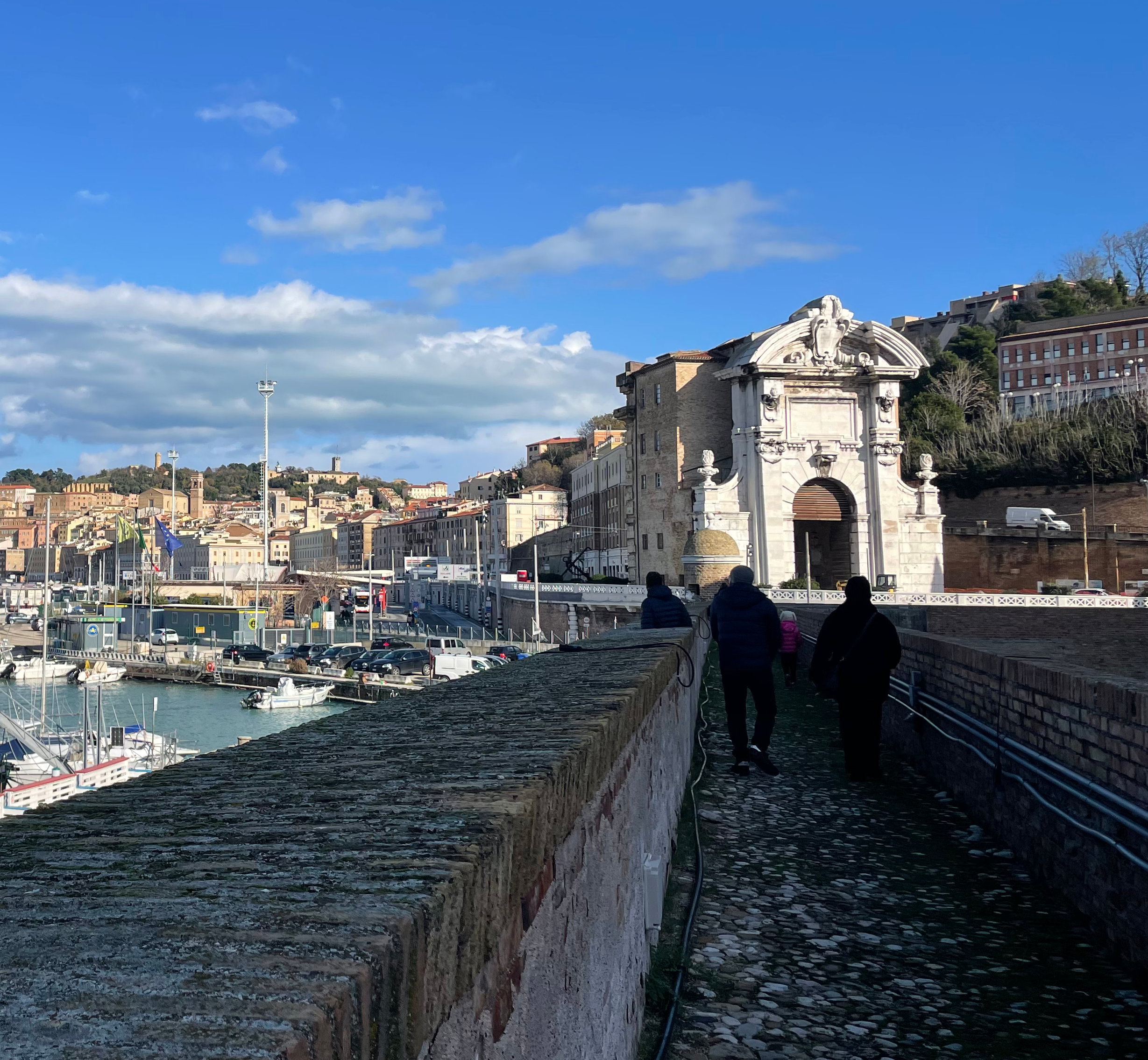
Porta Pia is an ancient gateway to the city of Ancona. It is an imposing work with Baroque features and a unique double facade. It was built along the coastal road between 1787 and 1789 by the order of Pope Pius VI, from whom it took its name. The project was entrusted to the Ancona-based architect Filippo Marchionni. The facade facing the sea, outward from the city, is made of Istrian stone with Baroque friezes and is flanked by two pilasters supporting the attic, which once bore a dedicatory plaque with the papal coat of arms. This plaque, along with the dedication inscription, was removed during the French occupation in the 1700s. The side facing Ancona, with no particular ornamentation, is constructed from sandstone blocks and concludes with a simple triangular pediment. On this side, there is another marble plaque that commemorates the liberation from papal rule by General Cialdini's troops. For many years, the premises of Porta Pia housed the offices of the Guardia di Finanza (Finance Guard), and since 2010, it has sporadically hosted nationally significant exhibitions (including the installation by the artist Ericailcane) and events for the city.
ADDRESS: Largo Caduti sul Mare, 60121 Ancona
Arco di Traiano
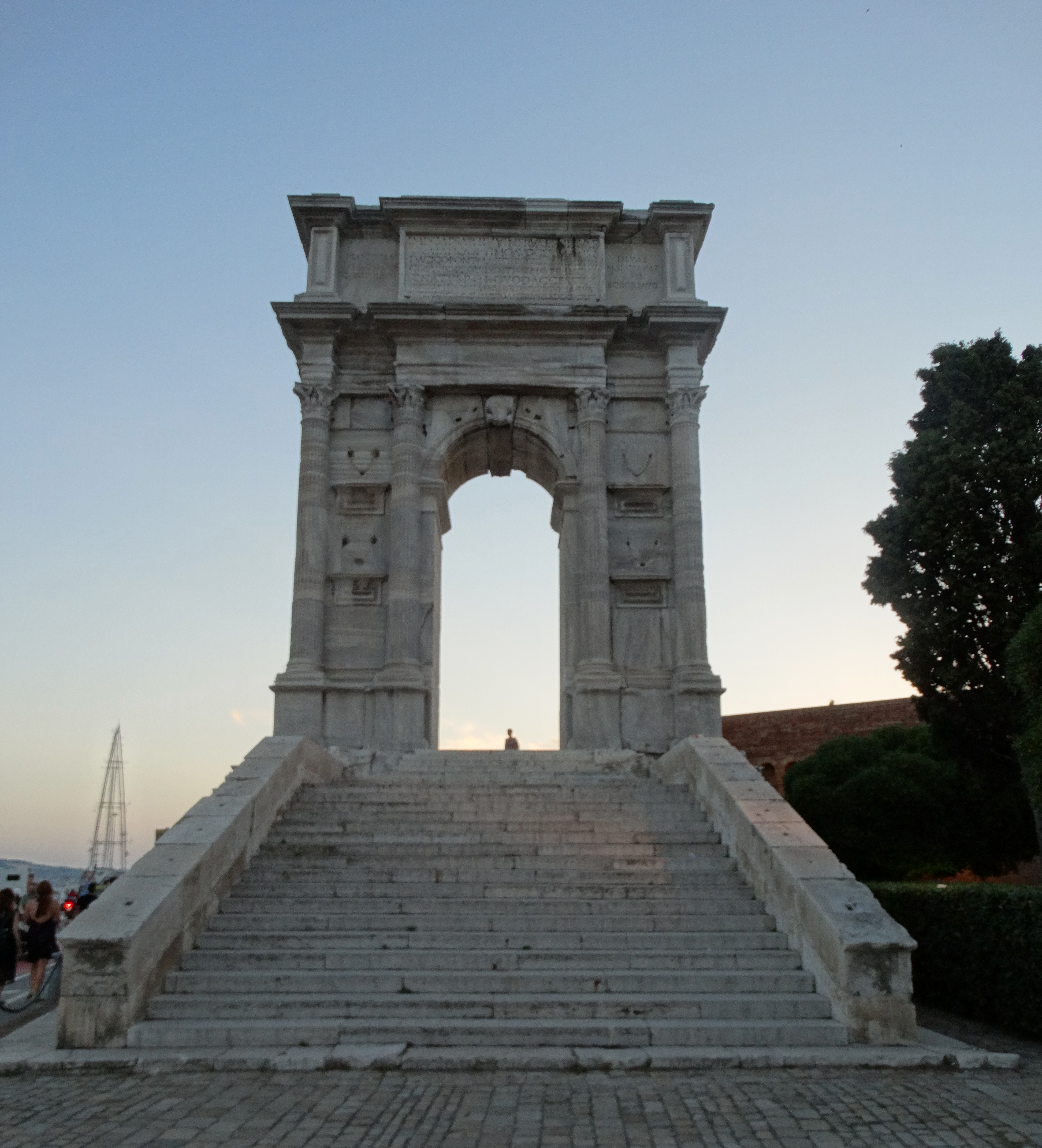
The Arch of Trajan is, together with the Roman amphitheater, one of the most important monuments from Roman times in the city. It was built in 100-116 AD By the Senate and people of Rome in honour of that Emperor after he expanded the port of the city out of his own pocket.It was from here that Trajan departed for the ultimately successful war against the Dacians. Attributed to Apollodorus of Damascus, the trusted Syrian architect of the empire, the arch is 14 meters tall and made entirely of Turkish marble. It stands on a high podium; two sturdy pillars frame the central archway and are adorned on both sides by two pairs of fluted columns with Corinthian capitals. The attic above the lintel shows a dedicatory inscription of the senate and roman people in honour of the emperor and his wife Plotina. Their bronze statues used to be in the attic: proved by the cables, inscription and frieze still in place. They were stolen by the Saracen pirates in 848.
ADDRESS: Lungomare Vanvitelli, 60121 Ancona
Arco Clementino
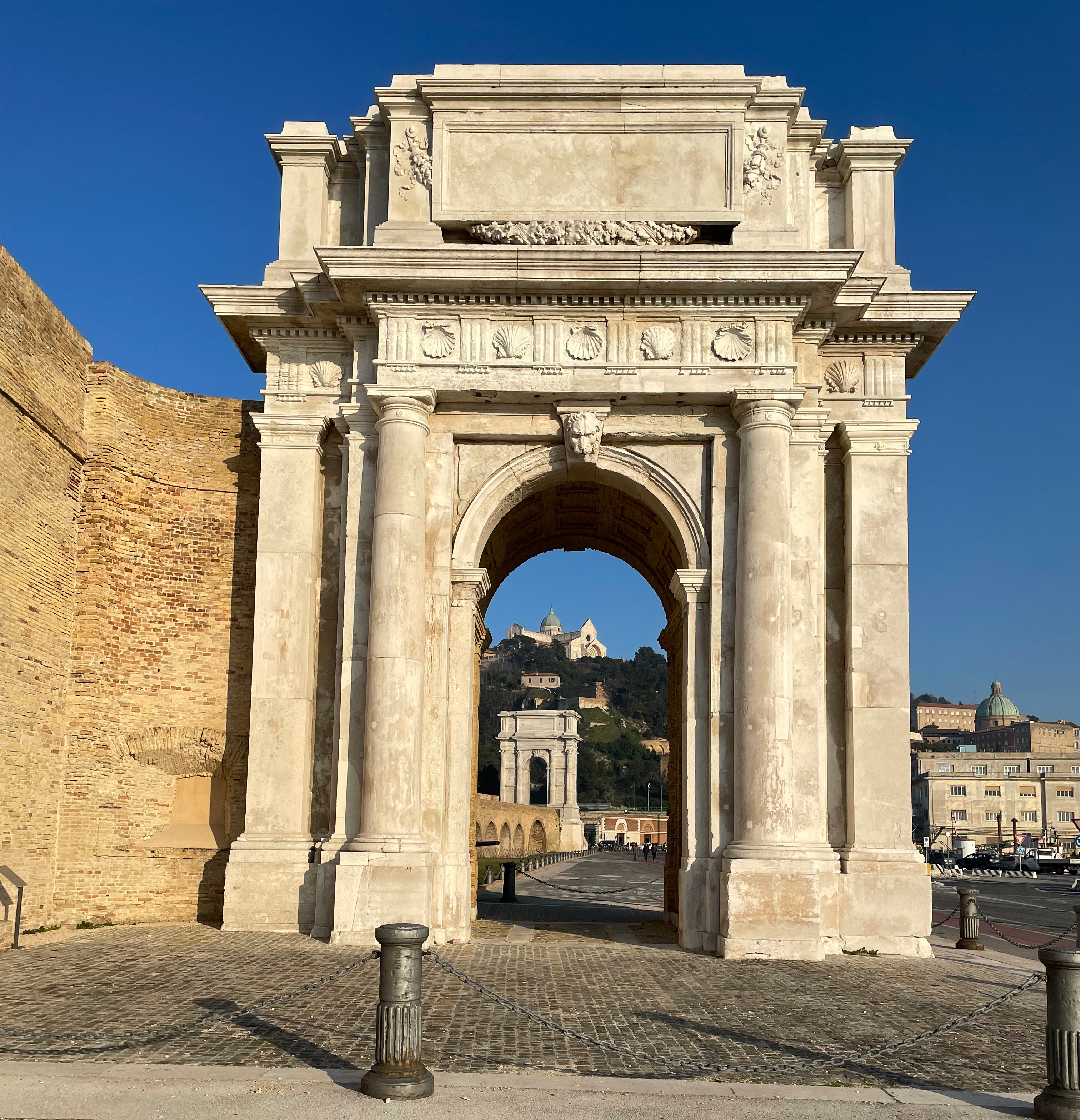
The Arch of Clement is one of the main works of the architect Luigi Vanvitelli in Ancona. It was dedicated to Pope Clement XII, who in the eighteenth century wanted to boost the economy of Ancona by making it a free port. He also entrusted the architect Luigi Vanvitelli with the modernization of harbour facilities. Erected in 1738 with the intention of creating a monumental portal, to embellish “the access to the city and to the Papal States in the eyes of incoming foreign merchants,” the arch marks the joint between the new pier and the ancient Trajan’s pier.In Doric order, it has two different sides. The side facing the sea, in Istrian stone, has a round arch, framed by columns with a superimposed entablature decorated with shells. The side overlooking the city has a brick battlement, just like the surrounding walls. The statue of the pope Clement XII, sculpted by Agostino Cornacchini in Rome, must have been on the attic. It is now located in Piazza del Plebiscito.
ADDRESS: Largo Vanvitelli, 60121 Ancona
Mole Vanvitelliana
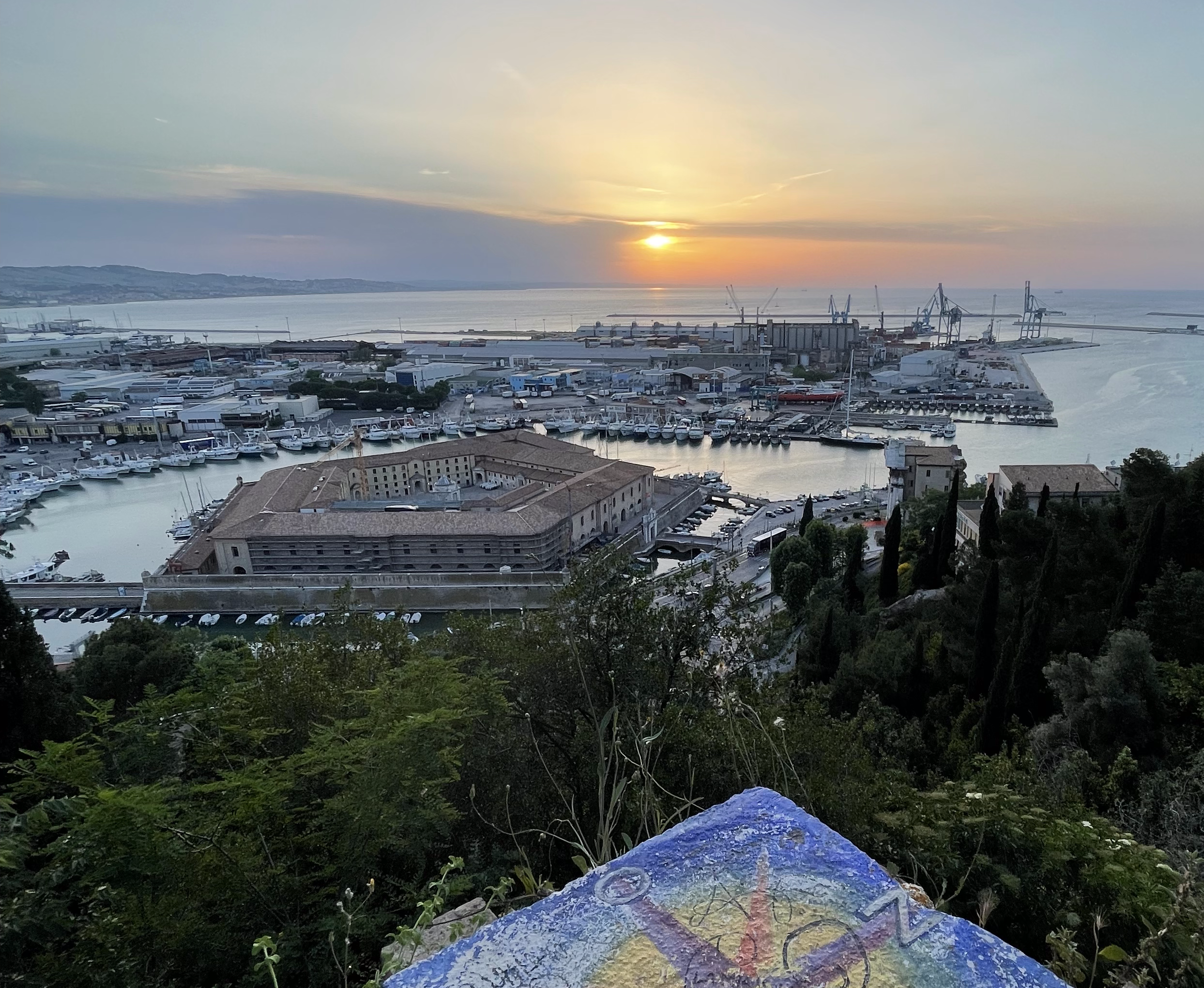
It rises in the water mirror of the harbor and is connected to the mainland by a small bridge. It's where it is said that even Casanova paused, engrossed in thoughts about the possibility of seducing maids and vivandières. The Mole Vanvitelliana (formerly known as the Old Lazaretto) now serves as a venue for cultural and musical events and is located in a strategic and picturesque position, within the port area just outside the old city walls. Designed by the renowned architect Luigi Vanvitelli (Naples, 1700 - Caserta, 1773) starting in 1732 in the port area of the capital of the Marches, during his stay in the Marches as a papal designer. The imposing structure (which covers nearly twenty thousand square meters) was designed to facilitate the urban reorganization of Ancona towards the south, facing the sea, and to ensure immunity from epidemics that could have been brought in by goods and people from places deemed suspicious. The decision to build a large Lazaretto was also justified by the prosperous commercial situation experienced by the city of Ancona during that time, as it had become a free port thanks to Clement XII. The building has a pentagonal shape, located in the harbor area, and is a kind of self-contained island, connected to the outside only by a small footbridge.
ADDRESS: Banchina Da Chio, 29, 60121 Ancona
INFORMATION: info@lamoleancona.it
FACEBOOK: https://www.facebook.com/laMoleAncona
INSTAGRAM: https://www.instagram.com/laMoleAncona
Cattedrale di San Ciriaco
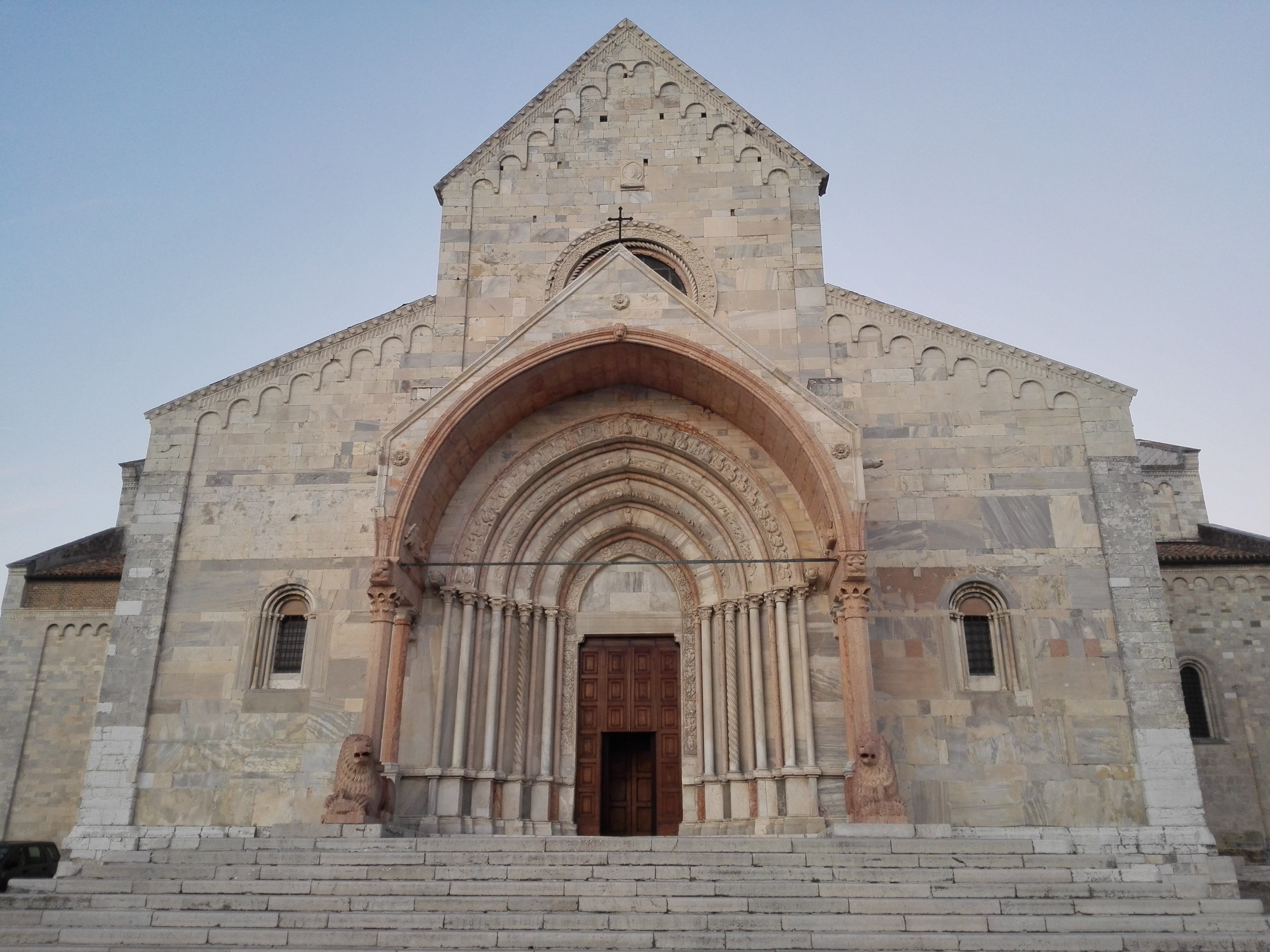
The Cathedral of San Ciriaco represents the emblem of Ancona, both due to its geographical location and its historical and religious significance. Situated in an extraordinary panoramic position, with its portal symbolically embracing the city below and the sea, it is in Romanesque style with Byzantine and Gothic influences. The hill where it stands was formerly known as the Cumero promontory, a name composed of the Greek words "Kuma" and "Oro," which together mean "mountain opposite to the sea". Later, it was called the Hill of San Ciriaco or Colle Guasco, named after Colonel Cesare Guasco, who oversaw significant fortifications towards the sea. It is built on the ancient temple dedicated to Venus Euplea, the protector of navigation, of which some of the foundations still remain. In the 6th century AD, the early Christian Basilica dedicated to San Lorenzo was built on top of it, which became the Cathedral in the year 1000 when the remains of San Ciriaco and San Marcellino were transferred there. During this time, the building was expanded: the longitudinal arm was constructed, transforming the basilica's plan into a Greek cross, the dome was raised, and a new entrance to the church was opened on the new arm. The façade is pointed, divided into three sections and preceded by a broad staircase, at the top of which stands the Romanesque-Gothic portal, supported by columns, two of which rest on reclining lions. The arches of the strombatura are adorned with carved motifs of plants and human figures alluding to Christ's reign in His earthly and celestial manifestations. The bell tower is isolated and likely belongs to the defensive system that crowned the top of the hill.
ADDRESS: Piazzale del Duomo, 9, 60121 Ancona AN
Network of Museums in Ancona - Mira
The artistic itinerary of MIRA (Musei In Rete Ancona - Network of Museums in Ancona) includes five museums surrounded by ancient monuments, located in the most evocative areas of Ancona.These locations are united by a network of intents; they are bound by the connections between artworks; they are full of history, art and culture. They want to be visited by tourists and be inhabited by citizens. You can discover this treasure by creating your itinerary, choosing the starting point, the end of the route and the way back. For more information https://www.mira-ancona.it/
| Museum Name | Address | Contact Info |
|---|---|---|
| Omero Tactile Museum | Mole Vanvitelliana, Banchina Giovanni da Chio, 28 (AN) Ancona |
Mobile phone/Whatsapp: +39 335 5696985 Email: info@museoomero.it |
| Archeological Museum | Palazzo Ferretti - via G. Ferretti, 6 Ancona |
Phone: +39 071 202602 Email: sar-mar.Museoancona@beniculturali.it |
| Diocesan Museum | Piazzale del Duomo, 9 - Ancona | Phone: +39 320 8773610 |
| City Picture Gallery | Palazzo Bosdari - Vicolo Foschi,4 (AN) Ancona |
Phone: +39 071 2225047 Email: pinacoteca@comune.ancona.it |
| City Museum - Closed | Piazza del Plebiscito (AN) ANCONA |
Phone: +39 071 2225037 Email: museodellacitta@comune.ancona.it |
Riviera Conero
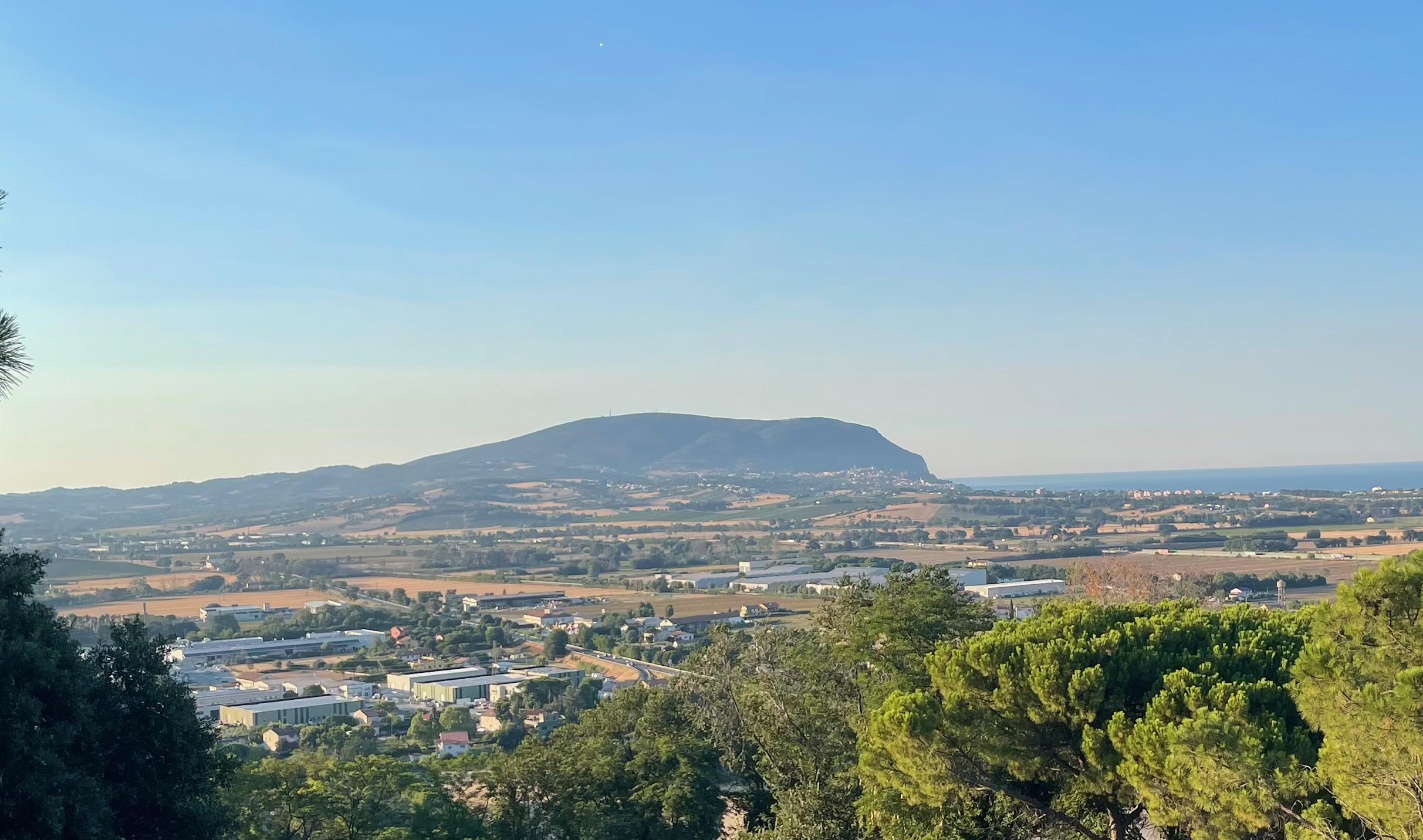
The Marche region is a succession of low, sandy beaches, a natural extension of the Adriatic coast of Romagna. Then, suddenly, the promontory of Mount Conero rises almost out of nowhere, on which the city of Ancona is located, and the landscape changes drastically: it is the only stretch of calcareous rocky coast from Trieste to Gargano. The stretch of coast that extends from the port of the city of Ancona to that of Numana is called the Conero Riviera, named after the homonymous promontory, that rises steeply above the sea, rich in coves and small, rocky or pebbly beaches, all of them awarded the Blue Flag.
Immersed in the Regional Natural Park of Mount Conero, certified with the European Charter for Sustainable Tourism, the Riviera is one of the most famous symbols of the bright natural beauty that looks eastward across the Adriatic Sea, homeland of the production of Red Conero wine, dotted with charming villages boasting Greek, Picene, and Roman histories such as Sirolo and Numana, spectacular bays like Portonovo, and includes places of natural interest, art cities, museums, castles, fortresses, and religious complexes.
Some useful links:
Marche in blu (turismo.marche.it)
Le spiagge della Riviera del Conero
"Spiaggia Palombina", Ancona
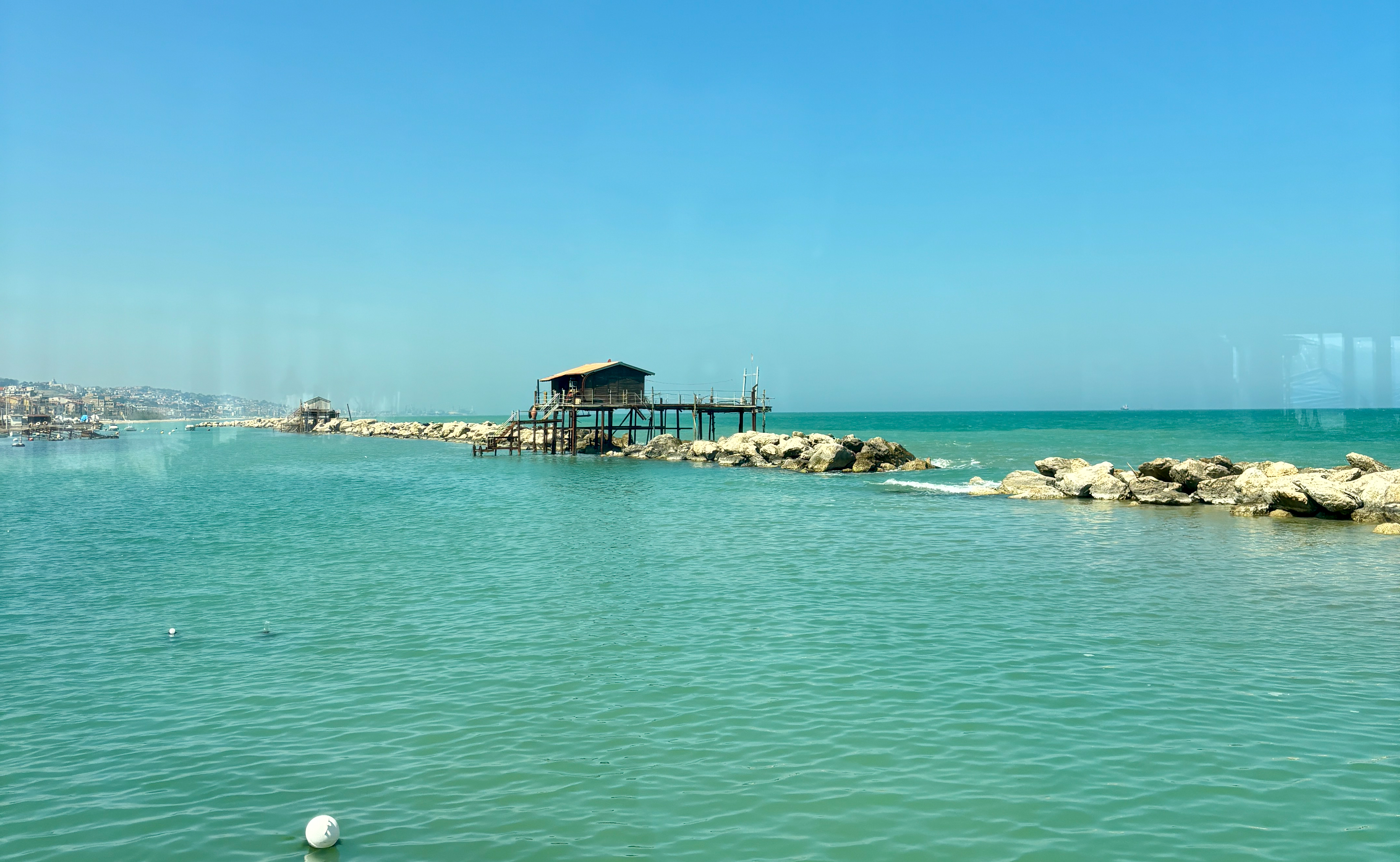
Palombina di Ancona is the northernmost beach on the Conero Riviera, typical of the Adriatic coast, with sandy shores and shallow seabed, particularly suitable for children. The numerous beach resorts offer all kinds of amenities, including beach volleyball tournaments, sunset aperitifs, or delightful seafood specialties to savor in the waterfront establishments.
"Grotte Del Passetto", Ancona

A short walk from the city center, we find one of the most picturesque beaches in Italy, the Passetto Beach, adorned with colorful little caves carved into the rock. These caves were once used by fishermen as shelter for their boats and are now lively in the summer with "grottaroli," sea lovers, fishermen, and those seeking tranquility.
"Portonovo", Ancona

The Portonovo Bay is also known as the Green Bay due to its unique characteristic of being completely immersed in the natural surroundings of the Conero Park and far from the busier roads. Here, you'll find yourself in a true oasis of green and blue, with crystal-clear waters and breathtaking views. It's perfect for a day of sun and sea, and, of course, delicious food!
"Le Due Sorelle", Sirolo (AN)
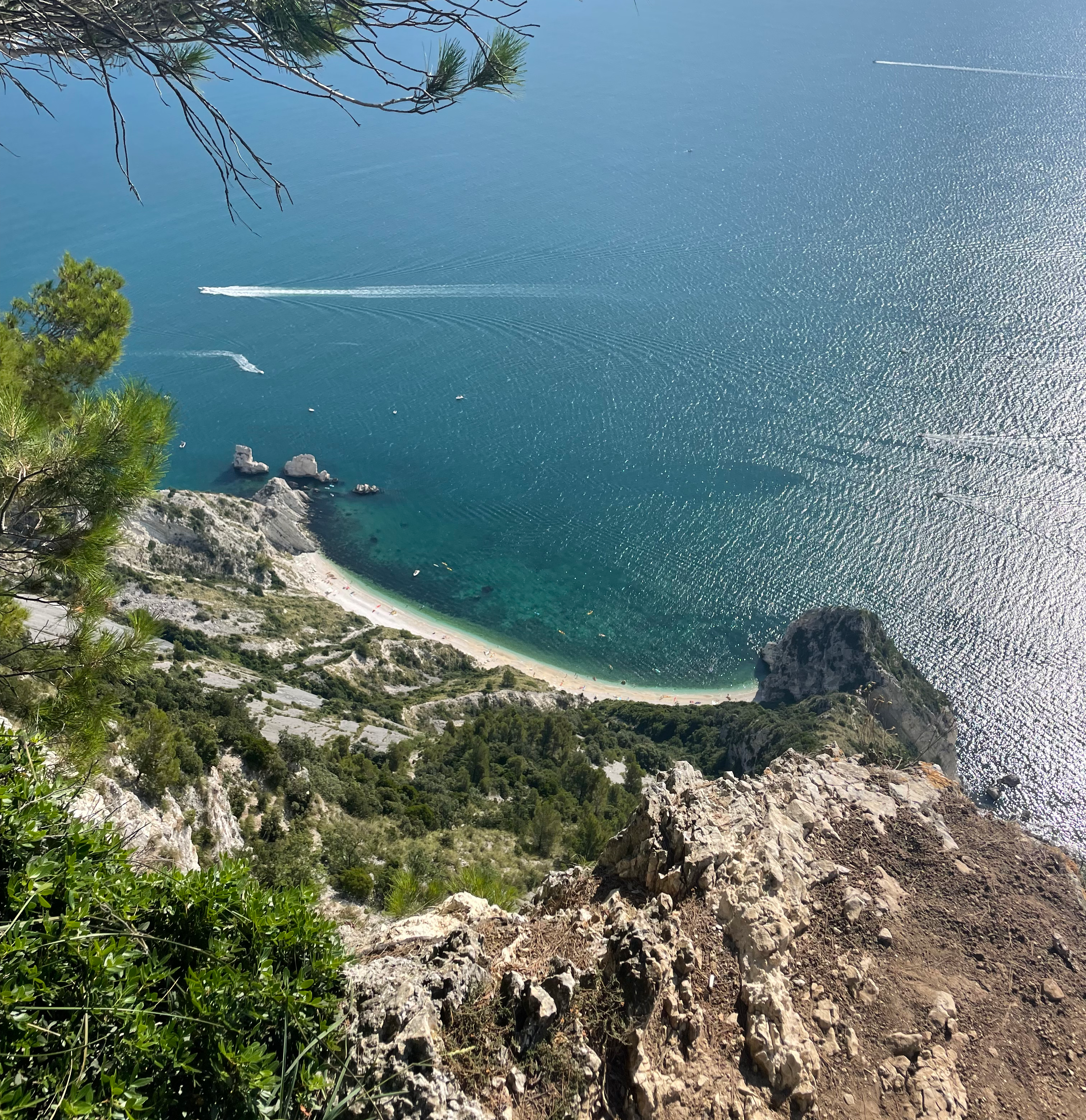
A broad cove nestled in pristine nature, only accessible by sea. It's named after the two twin rocks that emerge from the crystal-clear waters.
“San Michele” And “Sassi Neri” Beach, Sirolo (AN)
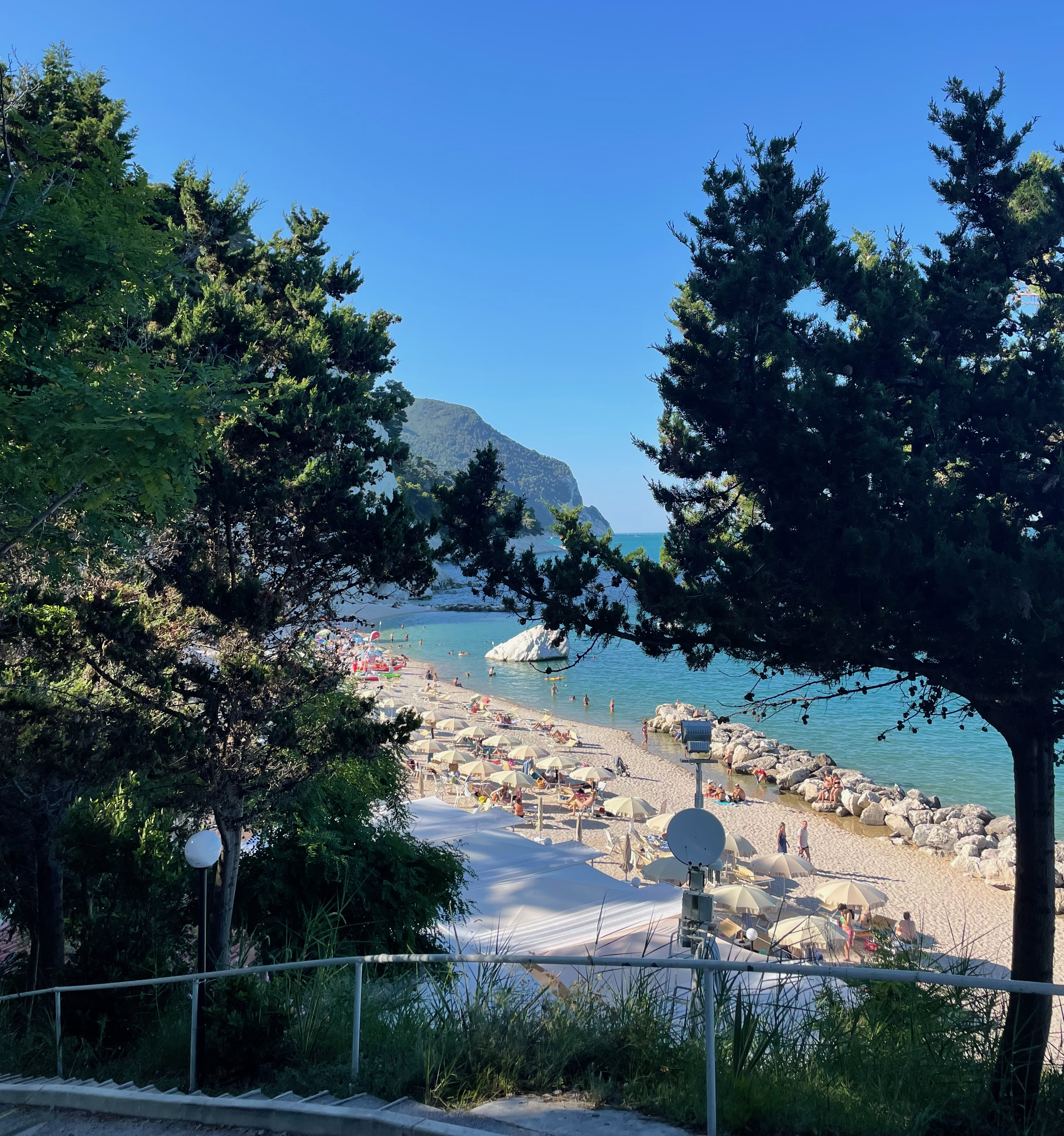
SAN MICHELE: Completely surrounded by greenery, it can be reached via the path starting from the Parco Della Repubblica or by shuttle bus. It is a pebble and sand beach equipped with bathing establishments.
SASSI NERI: Named after the dark rocks on its seabed. It can only be reached on foot, also from the San Michele beach.
With its medieval hilltop towns, lush countryside, hearty cuisine and longstanding traditions, Le Marche is region that deserves to be recognized for its own history and cultural identity. That's all of Italy wrapped up into one region. For more information: https://eventi.turismo.marche.it/en-us/
Loreto (AN)
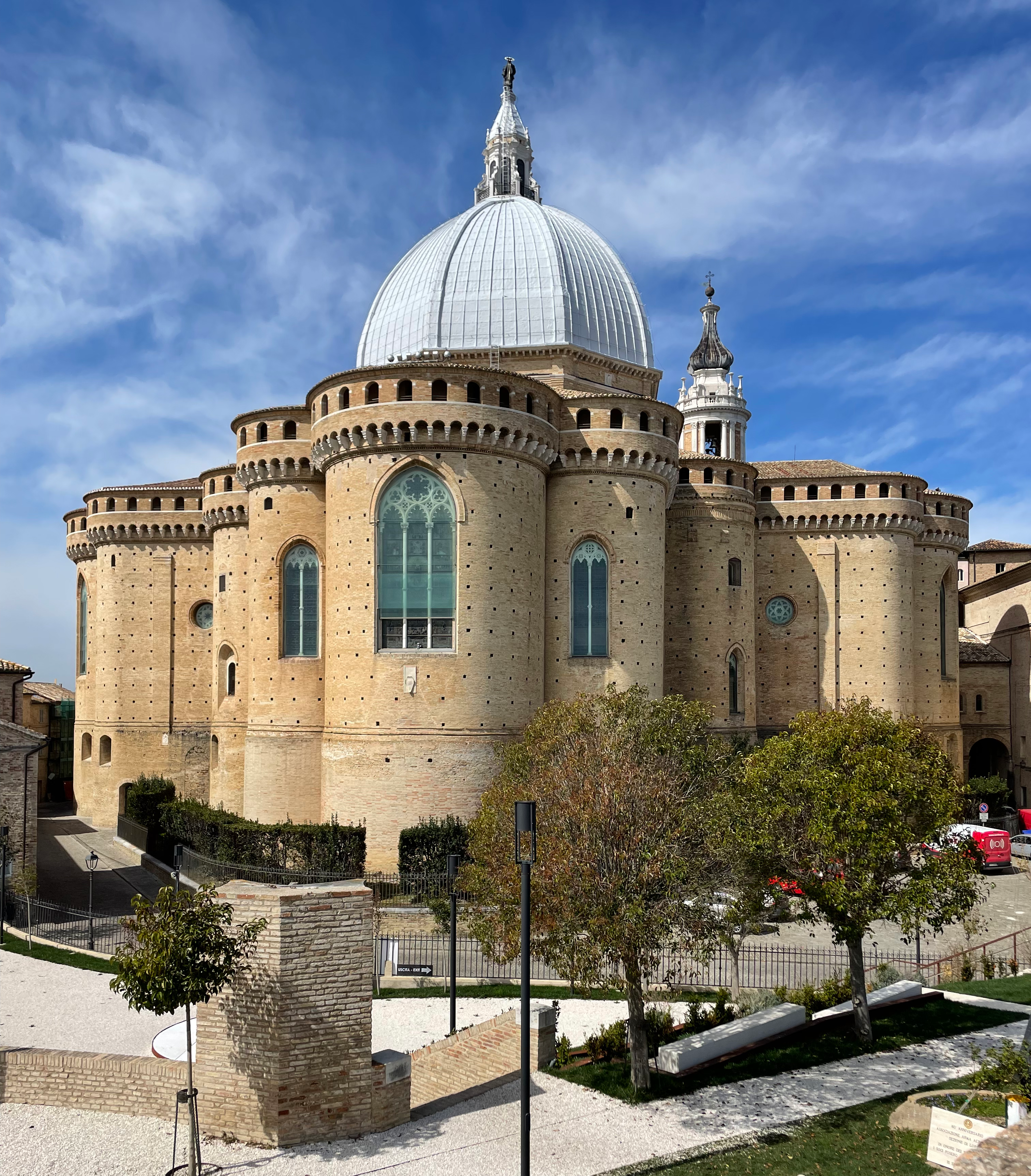
This renowned pilgrimage site is home to the Basilica della Santa Casa, attracting visitors with its art and spirituality. Loreto also participates in Marche’s innovation network by hosting workshops and events that promote technological advancement in heritage preservation.
Recanati (MC)
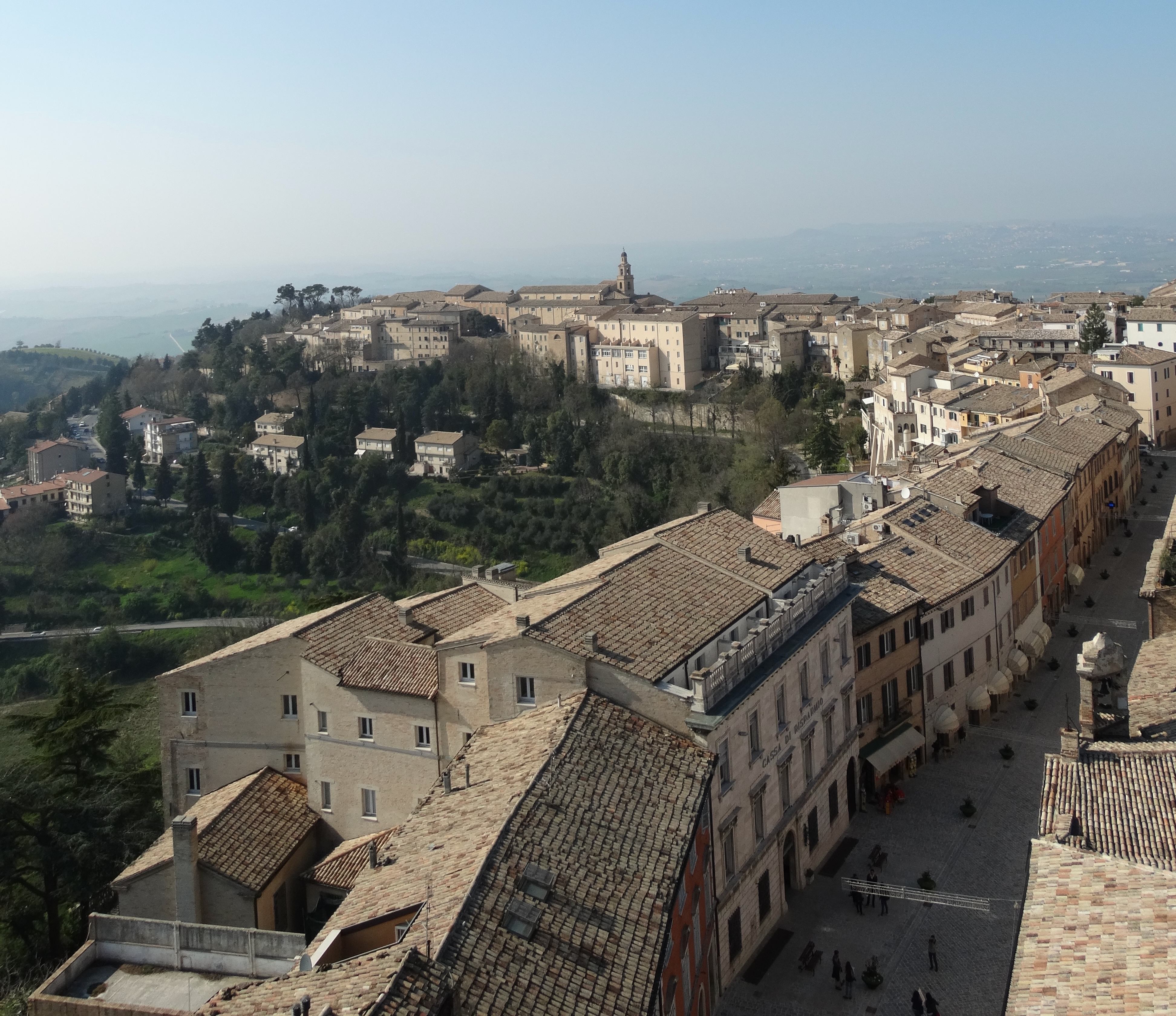
The birthplace of poet Giacomo Leopardi, Recanati combines literary heritage with a forward-thinking approach to digital educational tools that enhance literary studies and cultural preservation. The city supports projects on automation in education and heritage.
Frasassi Caves (AN)
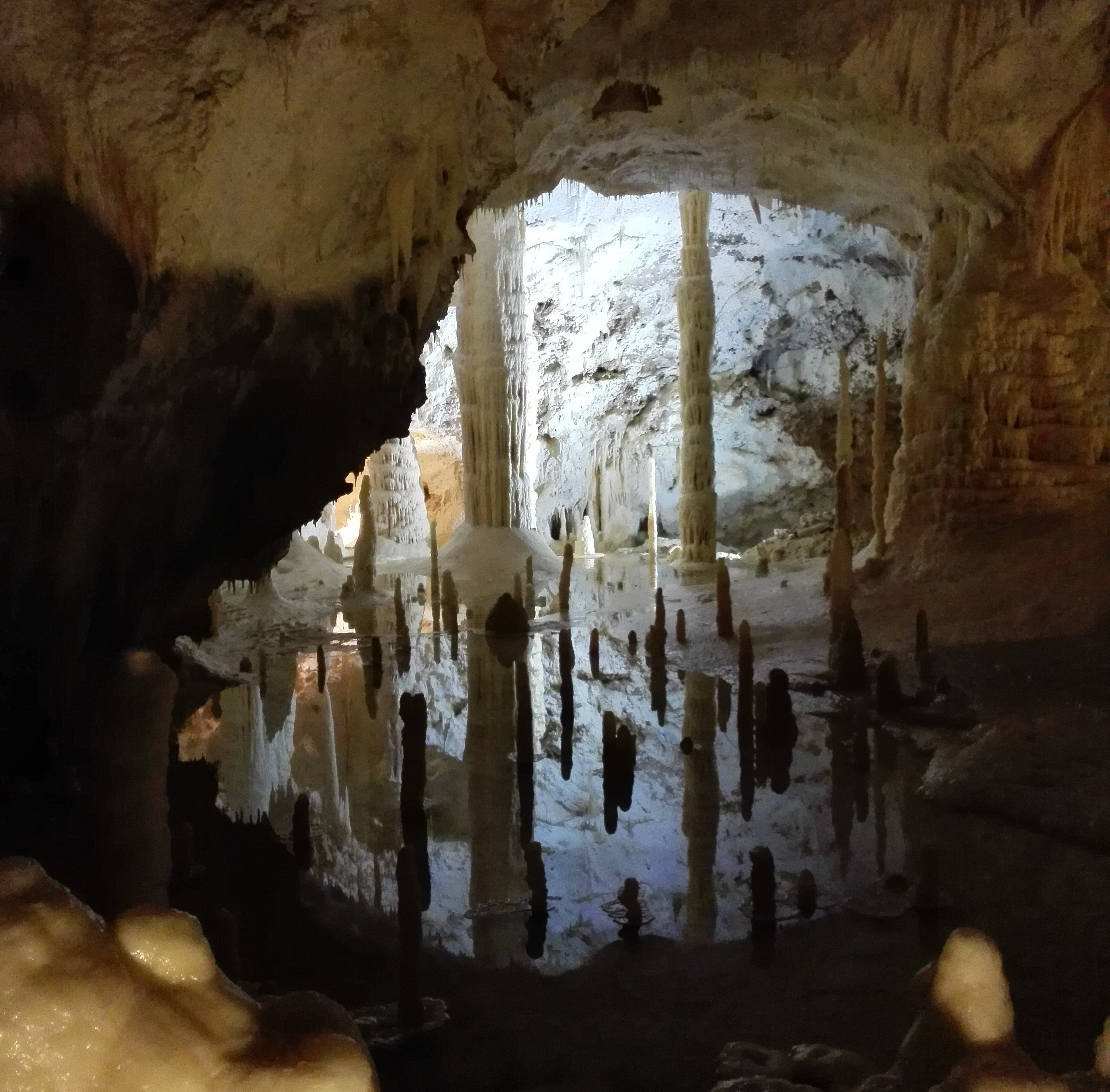
Near Genga, the Frasassi Caves represent natural beauty and cutting-edge geological research. They play a part in regional innovation through environmental automation, including projects focused on preservation and visitor management systems.
Urbino (PU)
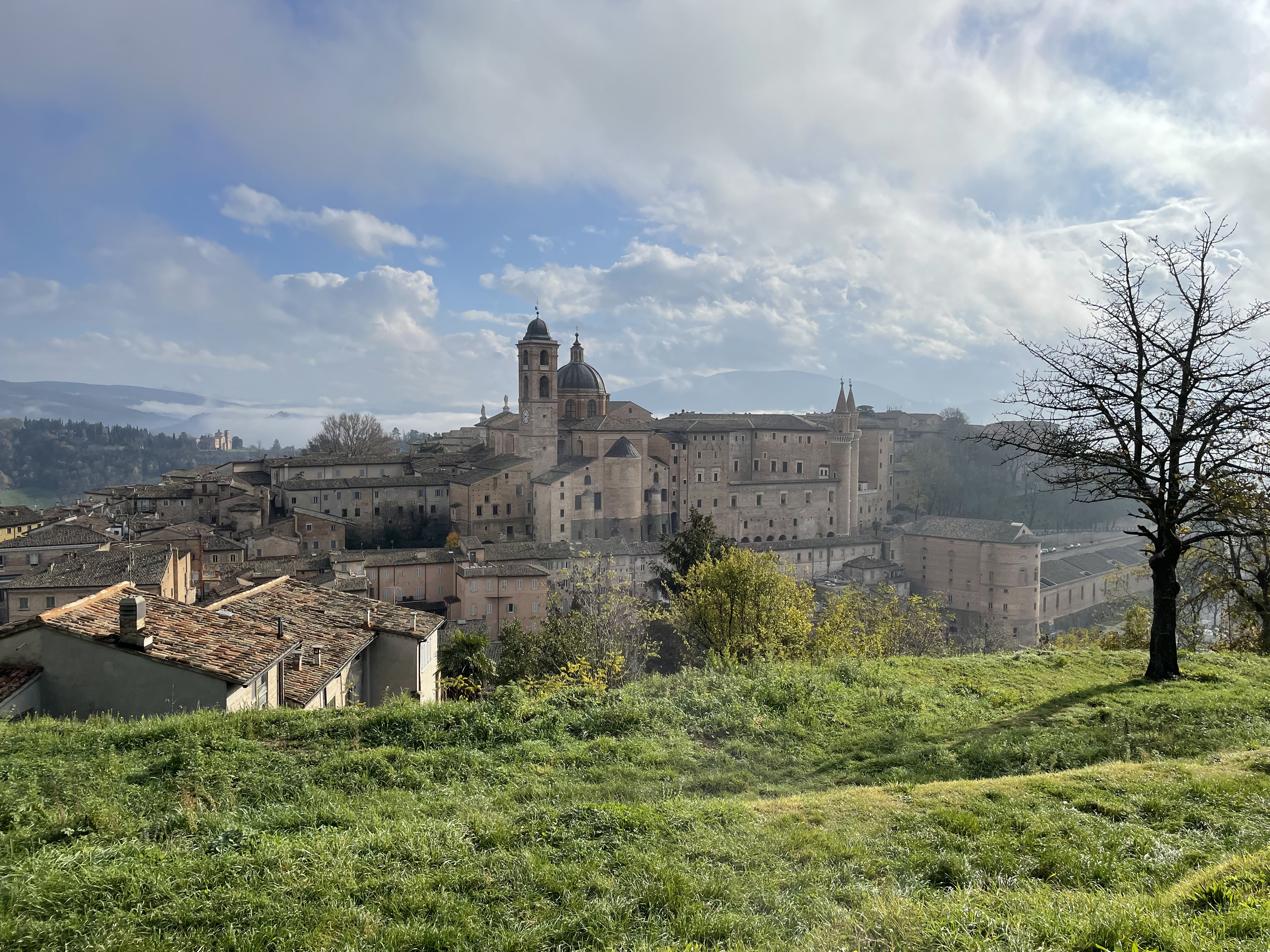
A UNESCO World Heritage site, Urbino is a center of Italian Renaissance art and the University of Urbino. The city hosts research in smart technology applications in heritage conservation and environmental sustainability.
Pesaro
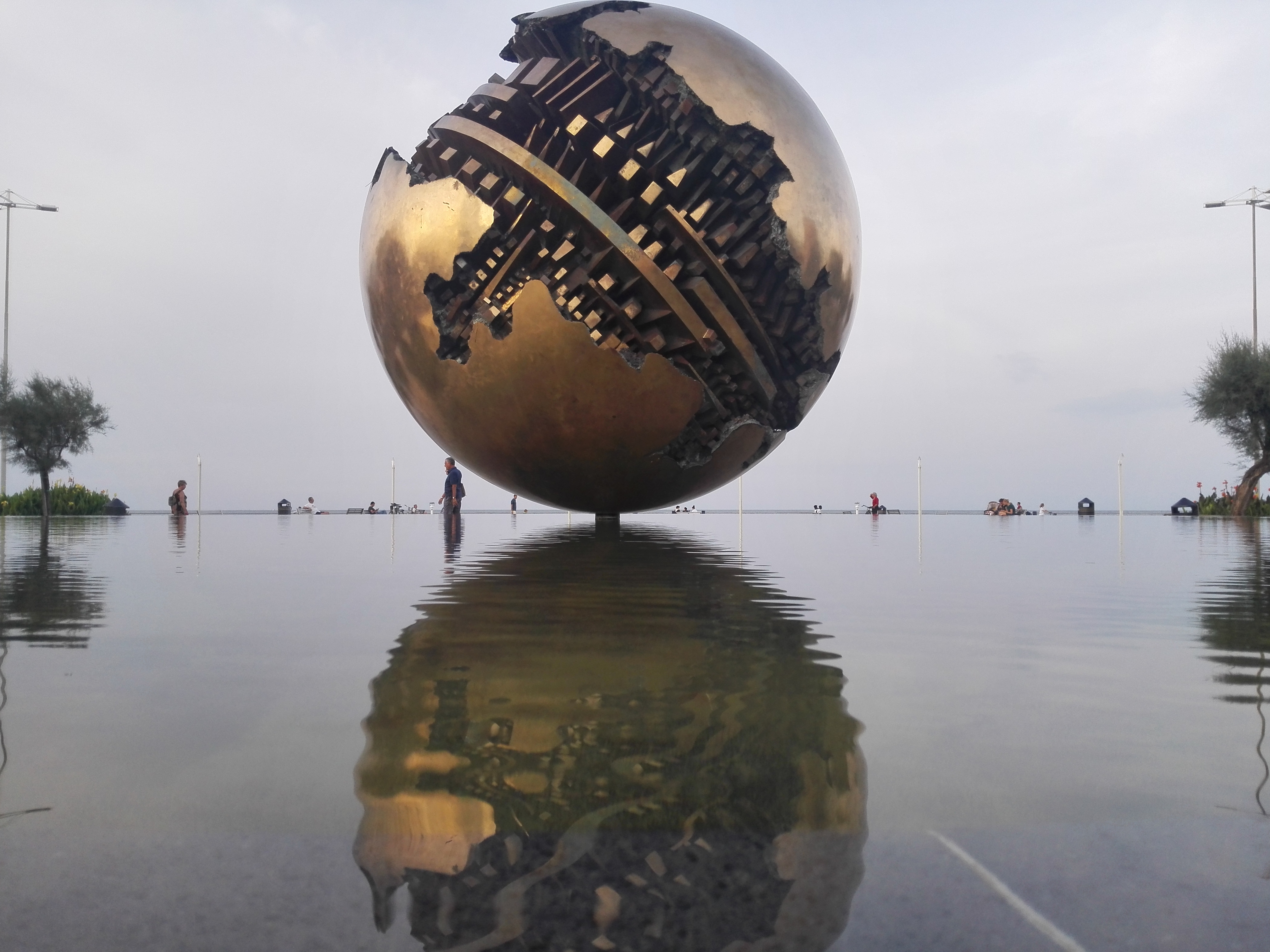
Known for its beaches and the Rossini Opera Festival, Pesaro is also involved in automation for cultural and musical events, leveraging technology to enhance audio-visual experiences and event management systems.
Sibillini Mountains (MC)

The Sibillini Mountains National Park promotes sustainable tourism with automated solutions for visitor management and environmental monitoring, creating an intersection of automation and natural preservation.
Fermo
The historic town of Fermo, with its elegant Piazza del Popolo, is a growing center for manufacturing and industrial automation. It collaborates with regional companies and research institutions to advance automation solutions in textile production and artisan crafts.
Ascoli Piceno
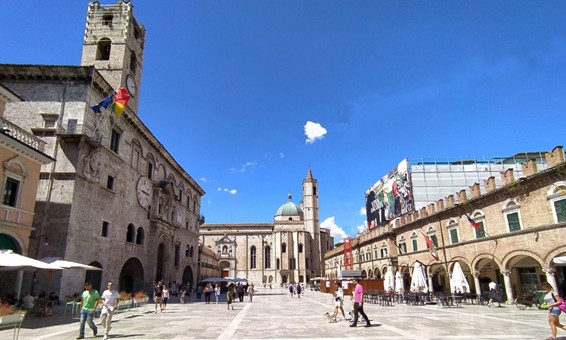
Known for its stunning Piazza del Popolo and historical architecture, Ascoli Piceno is also notable in precision manufacturing and automation technology, especially in collaboration with regional educational programs to train the next generation in advanced manufacturing techniques.


